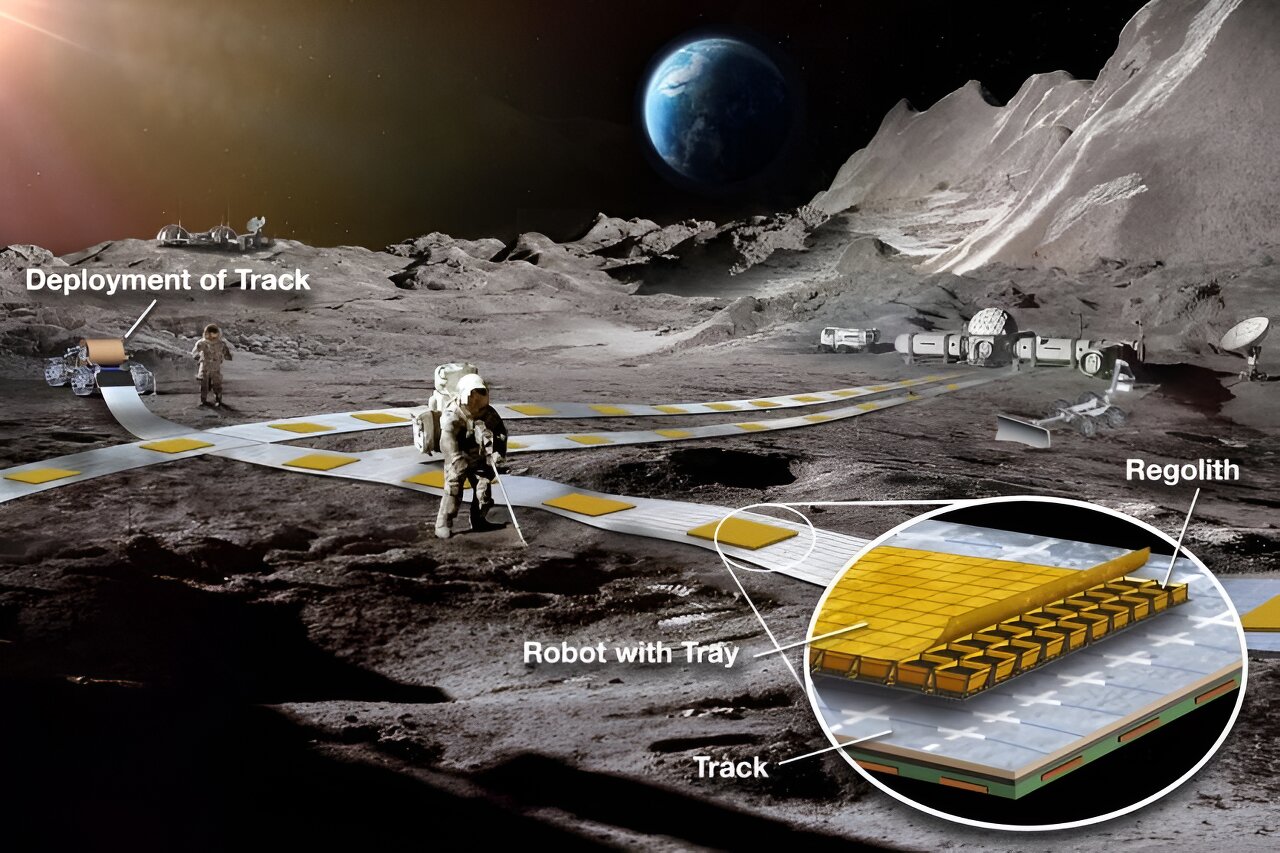The engineers proposed using maglevs to transport cargo on the Moon. These flying trains can move thanks to the repulsive force of magnets. The developers say that there are no problems with the power supply.

Flying trains on the Moon. Source: phys.org
Flying trains for the Moon
Engineers from NASA’s Jet Propulsion Laboratory and SRI International have proposed an unusual way to solve the problem of cargo transportation on the Moon. It is expected that in the future, after the base is deployed there and production, the volume of traffic will steadily increase.
Experts suggested using maglevs for the transportation of people and goods. On Earth, these flying trains have been operating in test mode for more than one year. The project of their use on the Moon was called Flexible Levitation on a Track (FLOAT). The company has already demonstrated the possibilities of levitating small robots over magnetic tracks and received a grant from NASA.
The effect of magnetic levitation is based on the repulsion of the same poles of magnets. It is even easier to implement it on the Moon than on Earth. A special feature of the FLOAT project will be a special design of tracks that will allow cars to levitate.
How the system will work
The track over which the lunar trains will levitate consists of two main and one additional element. The first of them will be a layer of graphite coating that will support the cart at a height about twice as high as the snowdrifts of lunar dust rise around them. Thanks to this, it will be possible not to lift it into the air.
The second mandatory element will be a system of electric circuits that will create magnetic fields to drive trains. They will not have their own control system, everything will be carried out thanks to the management of the track.
The third optional element is a track of solar panels that will stretch along the paths over which the carriages will fly. Scientists have calculated that they will be able to at least partially provide the system with electricity.
One of the main advantages of the FLOAT project is that all the elements of the system will be made of flexible materials, so that they can be brought to the Moon in the form of rolls and deployed where they are needed.
Engineers also assure that even hills will not be a problem for such a system, because the tracks will be able to move trains at an acceptable speed even with a slope of 30 percent. However, they do not yet know how to connect two separate rolls together to get a solid track out of them, but they are working on this problem.
In any case, we can say that FLOAT will try to be implemented on the Moon not soon. The Artemis program will reach landings and the creation of a permanent base closer to 2030. Therefore, the developers plan to launch maglevs to the moon in the middle of the next decade.
According to phys.org
Follow us on Twitter to get the most interesting space news in time
https://twitter.com/ust_magazine
